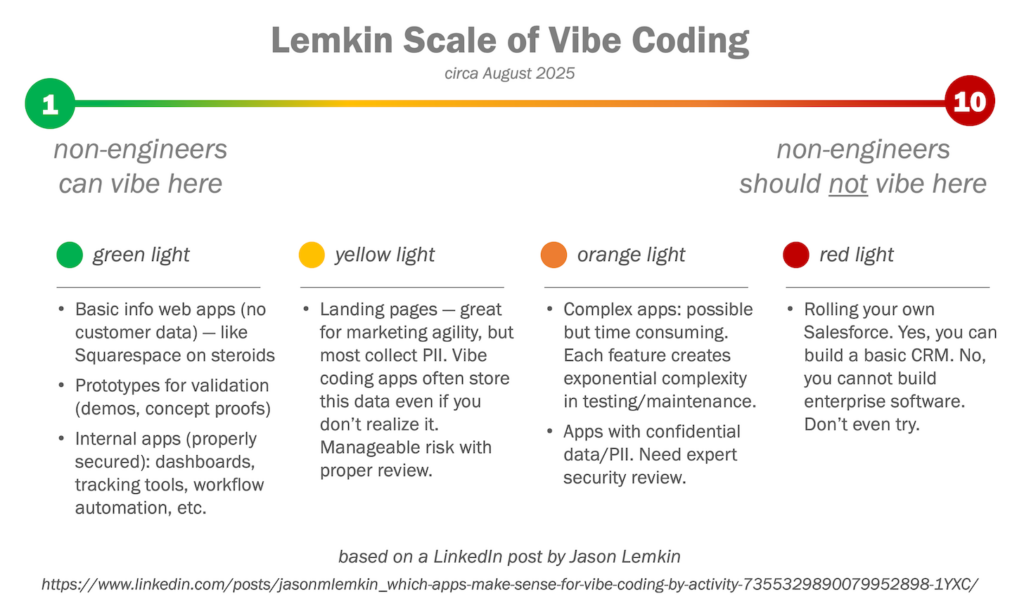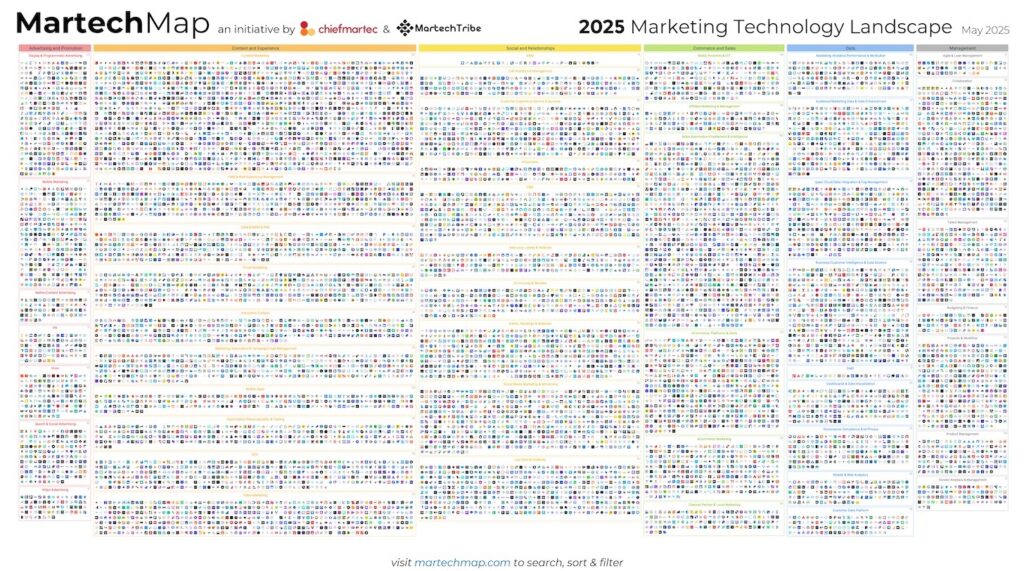
It was a big week for marketing technology.
Salesforce agreed to acquire ExactTarget (which had acquired marketing automation vendor Pardot less than a year ago) for a whopping $2.5 billion. Given that ExactTarget was at ~$356 million revenue yearly run-rate as of last quarter, that’s roughly a 7X multiple on revenue.
Congratulations to all the folks at ExactTarget — a well-deserved outcome for Scott Dorsey and his team. They’ve been pioneering marketing technology for 13 years.
And for Salesforce, their portfolio of marketing technology has been significantly expanded: especially with core email marketing and marketing automation capabilities. A bold stroke by Marc Benioff.
Makers vs. Buyers: Advantage to the Makers
First, it’s worth recognizing how much this event is reverberating throughout the marketing technology community. The strong valuation multiple and multi-billion dollar absolute value of this deal bodes well for the current rising stars — Marketo, HubSpot, Neolane, and Act-On immediately come to mind. (Hat tip to Neolane for their great Marketing Technopoly infographic.)
But this also accelerates the tempo of the musical chairs being played in this wave of consolidation. IBM nabbed Unica. Teradata nabbed Aprimo. Oracle nabbed Eloqua. And now Salesforce nabbed ExactTarget and Pardot. (I keep mentioning Pardot, because although their contribution to ExactTarget’s revenue may have been modest today, I believe their marketing automation capabilities are key to the company’s growth ahead.)
Those without a dance partner yet may be a little anxious. But I suspect anxiety is far more likely on the side of the potential acquisitors. Most of the potential acquirees are actually growing quite nicely on their own, either as public or soon-to-be-public companies. Their ambitions have no ceiling in sight. It’s the old guard from previous software empires, almost none of whom have developed modern marketing technology organically, that are sweating — or should be sweating — the massive power and budget shift to the CMO.
Still, given all the newsjacking that has been happening around this deal this week — I’ve received half a dozen pitches from other marketing technology companies in this space wanting to “comment” on it — it’s clear that many are concerned about the perception, if not the reality, that this acquisition represents some kind of end game for the space.
I don’t think it does. At least not at this stage.
Less of a Consolidation, More of Herding Cats?
The fundamental challenge we’re all facing is that modern marketing is extremely broad and complex, with a high degree of variance from one company to another. Oh, and it’s pretty much all in flux — disruption in marketing seems to be accelerating, not slowing down. According to recent research by Accenture, more than 70% of marketers feel that the marketing function will fundamentally change over the next 5 years.
In this environment, it’s nearly impossible to have “one software suite to rule them all.” Marketing is not like the ERP software market of the 90’s.
Consider the components now under Salesforce’s umbrella:
- Salesforce’s CRM is clearly the market leader
- Radian6’s social media listening technology is terrific
- ExactTarget has been the leading email service provider (ESP)
- Pardot’s marketing automation software is very good
Each on their own has a strong value proposition. Even if Salesforce simply continues to offer each of these as stand-alone products, albeit under a common brand, I’m sure they’ll do very well and earn excellent ROI from these acquisitions. They can also do a lot to improve the “loose coupling” between them. My humble opinion is that is by far their best short-term strategy.
But if they try too hard to force these pieces together, they face a number of hurdles.
First, merging very different software architectures and code bases is a ridiculously complex undertaking at that scale — particularly if you want to maintain backwards compatibility with existing customers on each of these different platforms. Since all of the existing data in each of these systems is one of their strongest “switching cost” defenses against competitors stealing those customers, they’d be taking a huge gamble to forsake that legacy. But keeping it is a huge drag on integration.
If they overcome that hurdle and integrate everything, the result is a massive product that has all kinds of hard-wired interconnections between all its different functionality. That’s fine if the game stopped there — as it effectively did with ERP. But if new capabilities are continually being demanded by ongoing disruptive innovation in marketing, then the problem becomes adding new features without breaking existing ones. Tightly coupled systems are notoriously fragile in this regard. And even if you can navigate the technical issues, how do you make the user experience coherent?
Imagine trying to steer a gigantic container ship through the canals of Venice.
And those are just some of the internal challenges they would face. For customers (and prospects), being presented with a huge monolithic suite raises big questions. What about the pieces not in there, such as web content management, customer analytics, testing and optimization, ad management, and so on? What about existing components that those companies already have from other vendors? What if they want to substitute one of the integrated components with something they think is better from another company?
A monolithic suite would likely be a serious impediment to a best-of-breed strategy.
A monolithic suite approach would also lean very heavily on Salesforce’s market equity in the CRM space. Part of why Salesforce is the dominant CRM is because it’s so widely supported by other marketing technology products in the broader ecosystem. Now that Salesforce is going to be competing with so many of their partners, do they really want to emphasize a strategy of squeezing those other vendors out? The strategic response of competitors could generate a real threat to Salesforce’s core business with a new generation of substitute CRM platforms.
All this is to say that I don’t think the Salesforce-ExactTarget merger is going to result in a “one suite to rule them all” victory, at least not any time soon.
The Open Marketing Technology Backbone Strategy
I still believe that the ultimate future of the marketing technology space is a true platform play: a common backbone for coordinating data and processes within marketing operations. Such a platform would thrive primarily on its ecosystem, enabling hundreds of different vendors and custom applications to easily plug into the backbone.
In such an environment, each marketing organization could weave together its own unique fabric of different components — a best-of-breed strategy, but one that could be more easily executed because the integration points in the backbone would be stable and standardized. Implement one integration to the backbone and gain loosely-coupled interoperability with everything else that’s connected to that backbone. Zapier is a terrific example of an early incarnation of such an approach.
To dream out loud for a moment, f I were Salesforce, I would take the lead to build that marketing technology backbone.
I’d build it from scratch — to have the benefit of a clean architecture with an unconstrained vision for the future. The Salesforce CRM, its existing marketing cloud applications, ExactTarget, Pardot, etc., could all plug into this backbone right away. That’s a much easier integration mission to undertake.
Maybe I would give my own applications a “most favored nation” status on that backbone. But I’d be careful about taking that too far, as the real goal would be creating a flourishing ecosystem around that backbone with the majority of other marketing technology vendors out there. If it were done right, it could be an incredibly compelling proposition for more “specialist” marketing technology providers to join that initiative. And once the dynamics of a dominant exchange take over — a virtuous cycle of more third-parties wanting to join because so many others are there, which in turn provides more power of choice and continuous innovation to customers — it could become an unstoppable juggernaut.
That was a winning strategy for Salesforce with their CRM, and it would be an incredible Act Two if they could pull it off for the broader marketing technology landscape.
I know, this “open backbone” approach certainly doesn’t appear to be the strategy that any of the other major acquisitors are following. But I think that’s one of the reasons why it could be such a game-changing move for the one who’s brave enough to think beyond the suite.
Will Salesforce be the one to change the game that way? I certainly think they could. And if they don’t, it’s a golden opportunity for someone else.



Salesforce already offers the #1 platform for enterprise. It’s called Force.com and works as you’ve described.
I think Force.com is a great foundation for such a backbone. But at least my understanding of Force.com is that it doesn’t try to mediate much interaction between all the different applications that one can run on it — it’s more of a platform-as-a-service (PaaS) offering, presumedly leveraging some of the same infrastructure of Salesforce.com?
What I’m thinking of as a backbone for marketing would have more explicit notion of shared data structures and shared exchange protocols between applications.
I’d suggest that distinction is more than fair.
It’s a really interesting point – you’d have thought that the type of entities dealt with by these systems should be very well defined by now. I doubt it’s as big a leap as it seems to abstract that away and create a common API.
Great post! So, what will happen next? Is it time for a human-driven marketing strategy and not only technology driven?
I am 100% behind human-driven marketing strategy. Technology is merely an enabler. That being said, it’s an enabler that’s certainly changing the possibilities — and expectations — of what humans want from their interactions with companies.
I agree, you hit the point. My comment was about a technology as enabler for “what human want from companies” rather “what companies want from humans”. Thanks
I agree with this backbone strategy. One could argue that ExactTarget’s HubExchange is just such a backbone. So SalesForce is already going down this path. Or, one could also argue that a multi-channel data management platform (DMP) such as x+1 would be a strong foundation for a backbone strategy. Either way, this is how I’ve seen large marketers buy technology recently – saas subscriptions which they then integrate at the data layer.
Good article with thoughtful insight. The one player I see that could really shake things up here is Google. If Google were to buy Salesforce and integrate it into their platforms (UA and DC), you would really have a platform that could do it all…attribution, big data, coordination, online and offline, seamless campaigns across device and program; yet likely open enough to allow integration outside of the owned components.
I am not sure I like any of the consolidation. Not because I am anti-corporate but because I believe that much of the vitality in the marketing space comes from the innovation of niche players and their entrepreneurial spirit. I have been affected by the Oracle/Eloqua, Salesforce/Exact, Google/Channel Intelligence, and the SAP/Hybris moves. At the end of the day, they ALL lead to price changes and integration challenges with the mother ship and its legacy products. They all come with the typical noise factor of any M&A activity ranging from getting onto the corporate email system to aligning legal wording on contracts.
I am all for using the “best of breed” and leveraging an integration services layer which enables the digital marketing industry to remain innovative and competitive at every station of this Digital Marketing Transit map.
Perhaps the real game changers are the integration services companies who can offer a comprehensive backbone that plays well with the APIs and SDKs of the niche players as well as the big guns. This will level the playing field and may the best technology win.